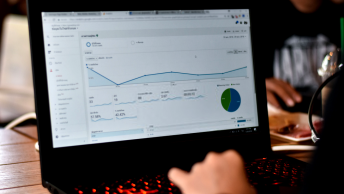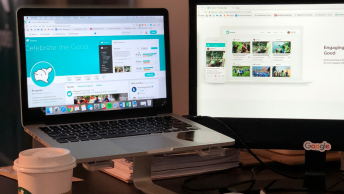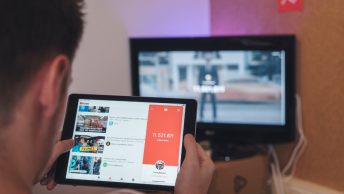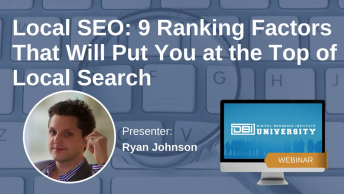On-page SEO optimization can feel like a complicated system that depends on too many factors, however with a quick look at different elements on your website you may be able to create a big change. Your on-page SEO optimization is too important to ignore. Follow these easy guidelines to find on-page SEO optimization success.
On-Page SEO Optimization
Being indexed and ranked on the search engine results pages (SERPs) depends on many factors, beginning with the different elements on each of your websites. Optimizing these factors helps search engine crawlers find your website, index the pages appropriately, and rank it according to your desired keywords.
On-page SEO optimization plays a big role in ensuring your online marketing campaign’s success.
Read on to find out how to successfully optimize your website to ensure that your website is indexed and ranked on the SERPs. In addition, you’ll learn how to make your web pages convert.
Codes, Tags, and Metadata
Having clean codes, optimized HTML tags, and metadata helps search engines to crawl your site better, and index and rank your pages according to the relevant search terms.
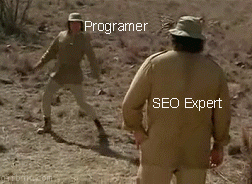
Source Codes
Your source code is the backbone of your website. Here the crawlers will find everything it needs to index your website here.
Make sure your source code is devoid of any problems by checking the following:
- Incorrectly Implemented Tags: Examples of these are re=canonical tags, authorship markup, or redirects. These could prove to be catastrophic, especially the canonical code, which can end up in duplicate content penalties.
- Server-Side Code Showing Up On the HTML Code: Depending on how this is processed, the code could either cause errors on the website or show up as text on the front end, revealing secrets that your competitors can pick up on.
- Meta Robot Tags: Implementing this tag without making sure you do not apply the “noindex, nofollow” parameter to your most important pages, is crucial.
- CSS Manipulation: You may have hidden content in your CSS codes. Removing this content is crucial to ensuring crawling runs smoothly.
- Excessive Script Code: This could slow down your page loading time which is bad for your SEO rankings.
- Analytics Tagging: Some tags for analytics may be available to competitors. Removing unnecessary tags is good practice.
Mark-Ups and Tags
Adding mark-ups improves the look of your SERPs listings and contributes to trust signals.
The most basic snippets are:
- Name, Address, and Phone Number (NAP) Rich Snippet: This displays your business name, business location, and contact details on the SERPs.
- Product Snippet: This displays the ratings of your products, images, price range, and availability.
- Review Snippet: This snippet shows the ratings and reviews exclusively on the SERPs.
- Video Snippet: This displays a thumbnail of the video display next to the listing. You can install this manually if you host your own video or if it is shared on a video sharing site (Youtube, Vimeo, Vine, etc), or automatically have this appear through the Facebook Share markup code.
Other specialized snippets are available and may be applied based on your specific needs and industry. These include snippets for recipes, people snippets (different from authorship mark-up because it shows a person’s position and affiliations, not the Google+ profile), music album snippets, to name a few.
You will also need to check your HTML tags and optimize all the titles and header tags. Maker sure your main keywords are part of your title.
Metadata
Optimizing metadata helps crawlers interpret your site content better.
It’s important to include the following details:
- Title: Keep your title within the character limit, and make it consistent with the web page’s title.
- Meta Description: This displays your business name, business location, and contact details on SERPs.
- Meta Keywords: Refer to your keyword groupings to determine which keywords you need to insert here.
- H1 Tag: There needs to be continuity between the title and header tag.
Landing Pages and Buyer Psychology

When planning your landing page, understand that in most instances, you should be able to drop paid traffic onto your landing page and still see good results.
An optimized landing page will work great for both SEO and PPC purposes. When your organically optimized page is not a good landing page which converts, you will be throwing away valuable traffic, and bottom line, you’ll be throwing away your money.
In order to get this mix right, focus your efforts on optimizing landing pages for search engines and for your potential customers. Go through a process of understanding how your audience thinks when they are searching for products and services online.
That information will help you determine which interests and needs need to be addressed during the customer journey.
Here’s how to do it:
Captivating, Keyword-Focused Title Tag:
On your landing page, this is the most important 8 – 10 words you’ll write. Keep it both keyword focused and compelling enough to be clicked on above your competitors.
Eloquent Description:
This text is the very first point of contact in search engine results and is thus a crucial component of your landing page optimization. Create descriptions that receive clicks through strong call-to-action.
Keyword-Focused, Powerful Headline:
Make sure that the user experiences continuity when making the first contact with the website. The headline contains the optimized keywords and gives your potential customer a reason to stay on the page and engage with whatever is offered. It also gives search engines the topical focus of your page.
Topically & Keyword-Focused Content:
It’s very important that the content on your landing page focuses on the topic and goals your website sets out to be achieved. Use the correct keywords and related phrases, but more than that, make sure that the content will be useful to your users. Use code to properly structure content for easy reading.
Call-to-action:
A good landing page doesn’t leave the user feeling unsure about the next step to take. It is clear and concise in providing the user with a motivation to take the next step. Create a clear goal and desired action for the user to take.
Site Structure:
When grouping your keywords and creating the site structure, consider the website topics, what keywords you want to rank for, and what the general purpose of the site is. Also, consider the customer journey and make sure that the site structure will make sense to your customers.
Trust & Credibility Signals:
Add testimonials and logos of the companies your clients have worked with so far. This will send trust signals to their target market and add to their credibility. Encourage reviews from customers through social media and forum engagement, email surveys, and links to your clients’ local listings.
Socialization:
The importance of social signals shouldn’t be understated insignificance when it comes to search algorithms. Make sure that your website pages are easily shareable by your users, making sure your visitors engage with your offerings.
SEE ALSO: Do I Need to Optimize My Instagram Business Profile for SEO?
Other Factors
There are few other factors that search engines will look at when ranking your website. These may not feel like big on-page SEO optimization issues, but studies have shown they do have an effect on your rankings.
Content that Drives Traffic
Content is the backbone of your website. There’s a saying that ‘content is king’. However, this doesn’t apply to all content. Only content that is of high quality and brings in readers can be considered successful content marketing.
For good on-page SEO optimization, your content needs to be practical, useful, and valuable. It needs to be interesting to read as well as being in-depth and well written. Additionally, it needs to be written with the reader in mind and be easy to share. The best way to do this is to solve a problem and be optimized for a high-volume keyword.
76% of online shoppers reported that they felt excited and closer to a company after they were able to read their custom content. This is why custom content is the future of digital marketing.
Loading Speed
A disproportionately high 47% of users expect your web page to load in under two seconds.
Again, a disproportionately high 57% of your website visitors will abandon your page if its load time is 3 seconds or more.
At peak traffic times, over 75% of online customers opted for a competitor’s site instead of suffering inordinate delays.
If your loading speed isn’t quick enough, it won’t matter if you were the first site Google suggested. Viewers won’t stick around long enough to appreciate the site you put together if it doesn’t load on their timeline.
The speed with which your website loads is almost as important as the keywords you choose for on-page SEO optimization.
Final Thoughts
Implementing a good on-page optimization strategy will bring paying customers to your doorstep. Even though it’s only the first step in the process, you will see an increase in good traffic to your website. Optimizing your landing pages closes the loop in the conversion process and makes sure that these paying customers spend their money on your business.
Have you looked at on-page SEO optimization as a tactic to drive more traffic?



